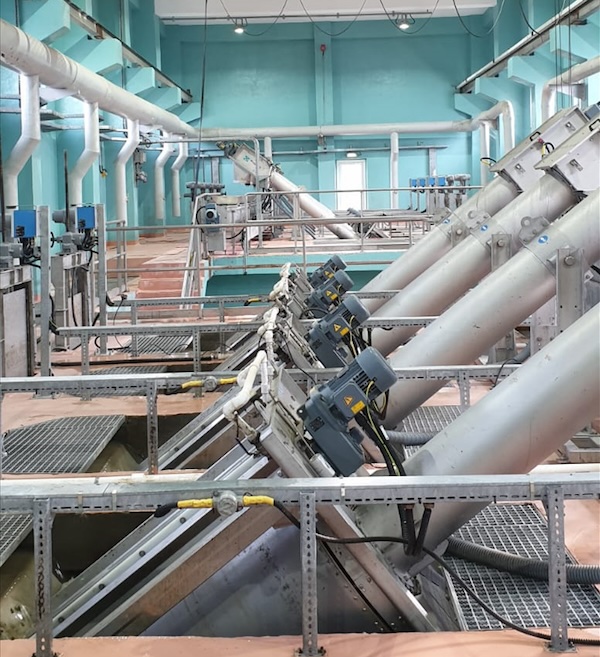- UAB FinEco Ltd. values partnerships and seeks long-term cooperation.
- We are members of the Lithuanian Water Suppliers Association.
- We supply spare parts.
- We carry out commissioning, training and management software upgrades.
- We work together to ensure that wastewater treatment plants run smoothly and protect the environment.
- We are the trusted link between you and the manufacturers we represent.
WASTEWATER TREATMENT PLANTS FOR MUNICIPAL AND INDUSTRIAL WASTEWATER TREATMENT
Innovation and opportunities in wastewater treatment are constantly growing, and a circular and holistic approach to wastewater treatment is uniquely beneficial, not only from an ecological perspective, but also in terms of cost-savings, reduced environmental impact, and reuse of resources.
Every wastewater treatment project is unique, with its own challenges and opportunities. Thanks to our experience and wide range of equipment, we can help you find the best solution to meet your needs and objectives.
Whether you’re a contractor, a designer or a plant operator, we’re here to help you embrace these opportunities and fulfil your vision and goals.
Problemų supratimas
Platus asortimentas
Patikimi gamintojai
Individualus pritaikymas
Ilgalaikis tarnavimas
Our mission
Wide range of products
Reliable manufacturers
Customisation
Our goal
Wastewater treatment plants for municipal and industrial wastewater - environmental solutions
By choosing us, you will have a partner who will always provide you with professional assistance in choosing wastewater treatment plants for municipal and industrial wastewater treatment that satisfy your needs and meet high environmental standards
Why us?
Wide range of products
Quality
Why us?
Wide range of products
Since 2008, we have been supplying high-quality, reliable and long-lasting equipment:
- For urban and industrial wastewater treatment.
- Receiving and accounting for incoming wastewater.
- To separate and wash the sand.
- For sludge treatment.
- For the containment and separation of various substances.
- For the containment and separation of fats, oils and greases.
- Water and wastewater sampling, analysis and monitoring.
Quality
We represent European manufacturers who have been developing and refining wastewater treatment plants for more than 100 years, using only the highest quality stainless steel. In cooperation with manufacturers and wastewater treatment plant representatives, we strive to continuously improve and find innovative solutions, ensuring long-term benefits for the customer and comprehensive environmental protection.
Need a professional business consultation? Let's discuss your case!
High level of competence
Our experience will help you create a quality product
Aliquam erat volutpat. Donec placerat metus erat, nec vulputate nulla iaculis eu. Suspendisse potenti. Sed sagittis maximus quam, nec laoreet enim laoreet sed lorem ipsum vulputate nulla iaculis. Suspendisse euismod felis nunc, vitae aliquet lectus ornare.
01.
Experienced specialists
Quisque in suscipit nisi, at auctor orci. Sed posuere ullamcorper molestie. Suspendisse euismod felis nunc, vitae aliquet lectus ornare.
02.
Stable & predictable results
Mauris eu ex nec felis sagittis efficitur. Suspendisse euismod felis nunc, vitae aliquet lectus ornare ac. Sed posuere ullamcorper molestie.
03.
100% Satisfaction guarantee
Mauris eu ex nec felis sagittis efficitur in suscipit nis posuere ullamcorper molestie. Suspendisse euismod!
04.
20+ Years in consulting business
Sed posuere ullamcorper molestie. Suspendisse euismod felis nunc, vitae aliquet lectus ornare ac.
Would you like us to contact you? Please fill in the form below
Why choose our company
Here's how things are going to change for your business
- 150-180% more lorem volutpat donec glavrida ipsum dolor
- Reative volutpat donec glavrida ipsum
- Class aptent taciti sociosqu ad litora
- 100-200% of dolor nulla gravida et ipsum nulla
- Amet lorem felis - dolor nulla gravida et nulla gravida


